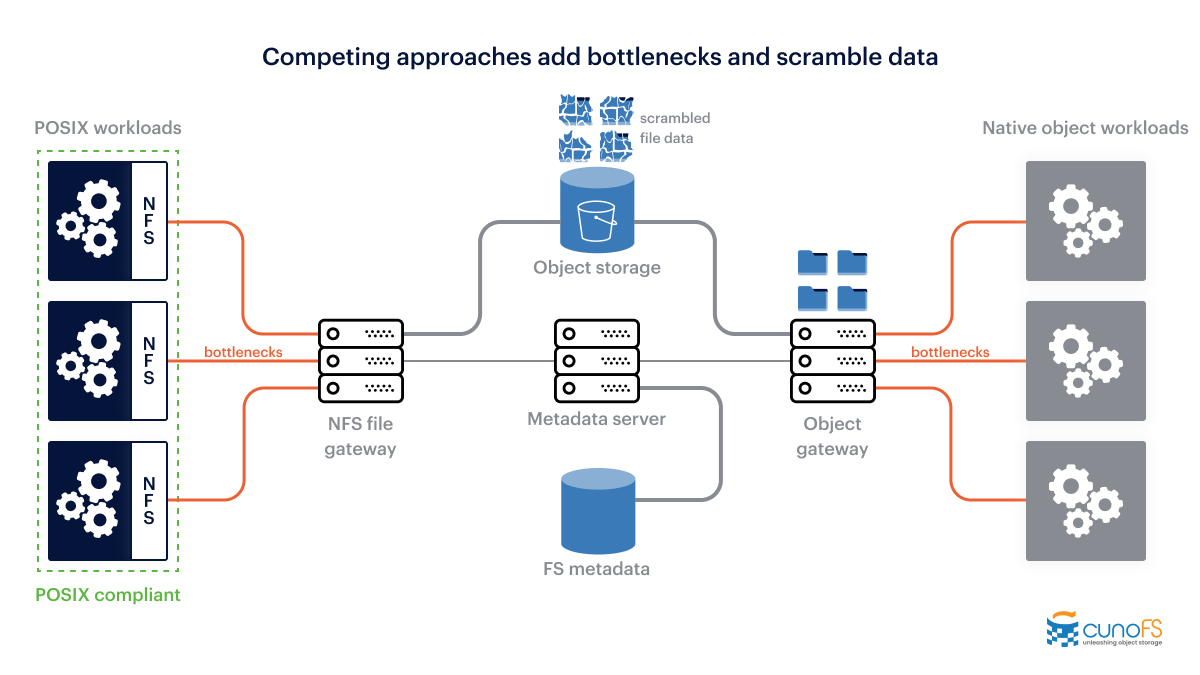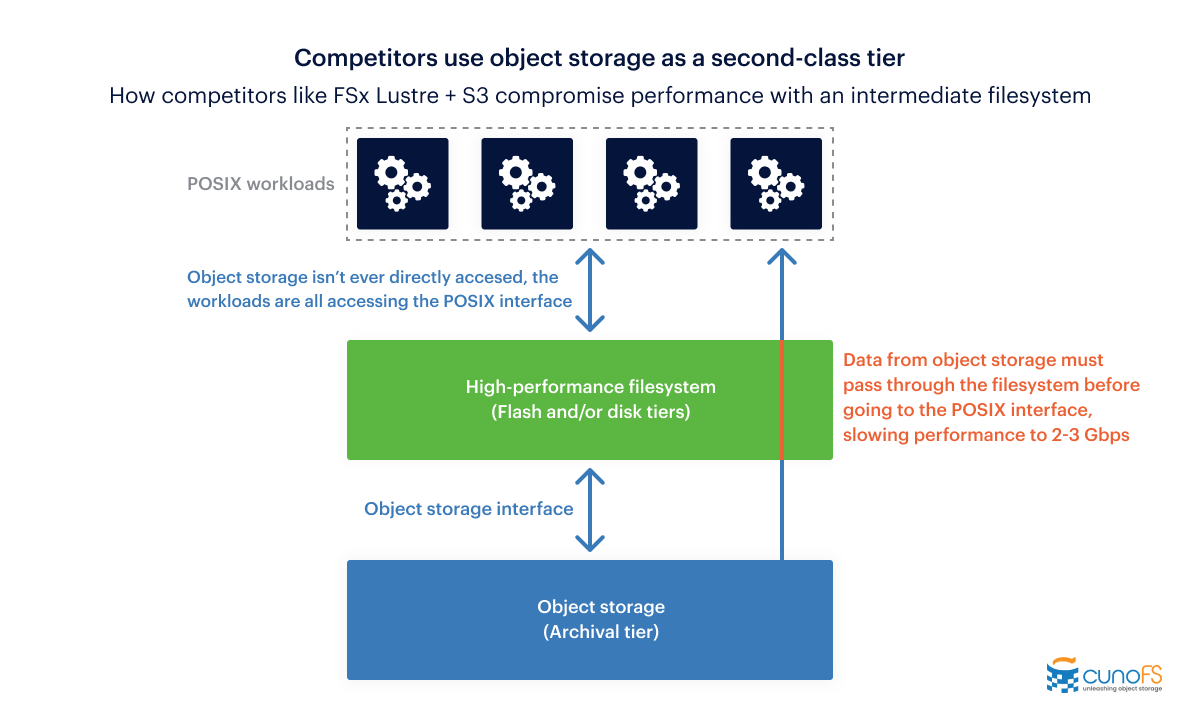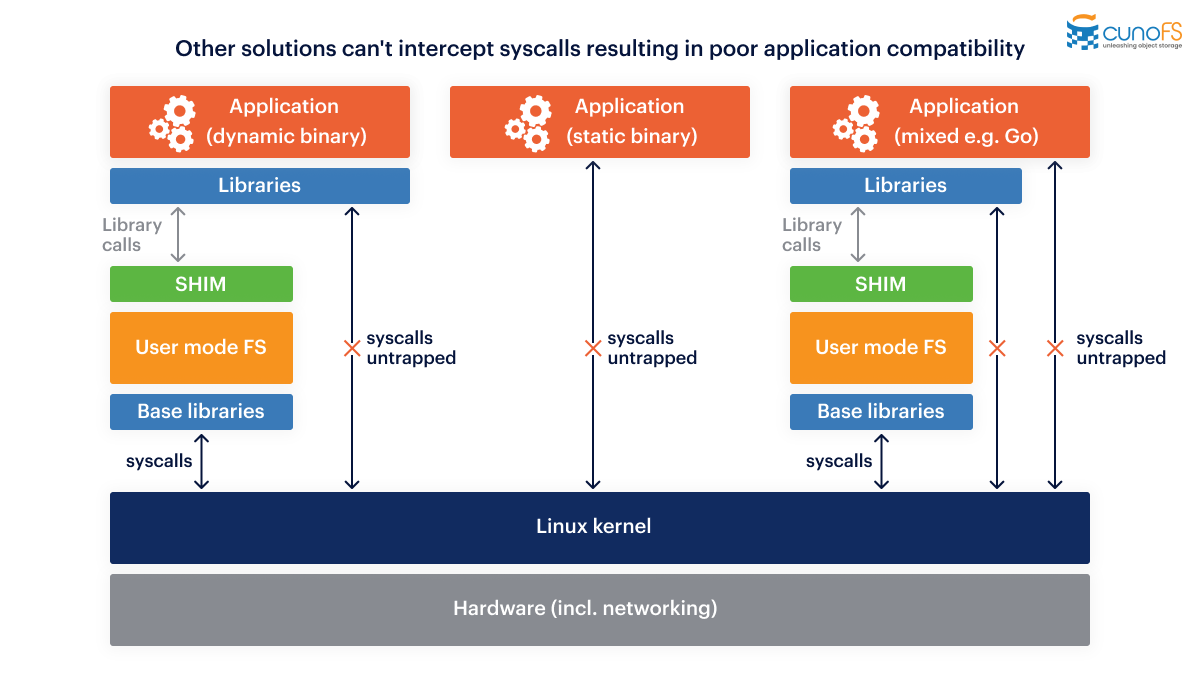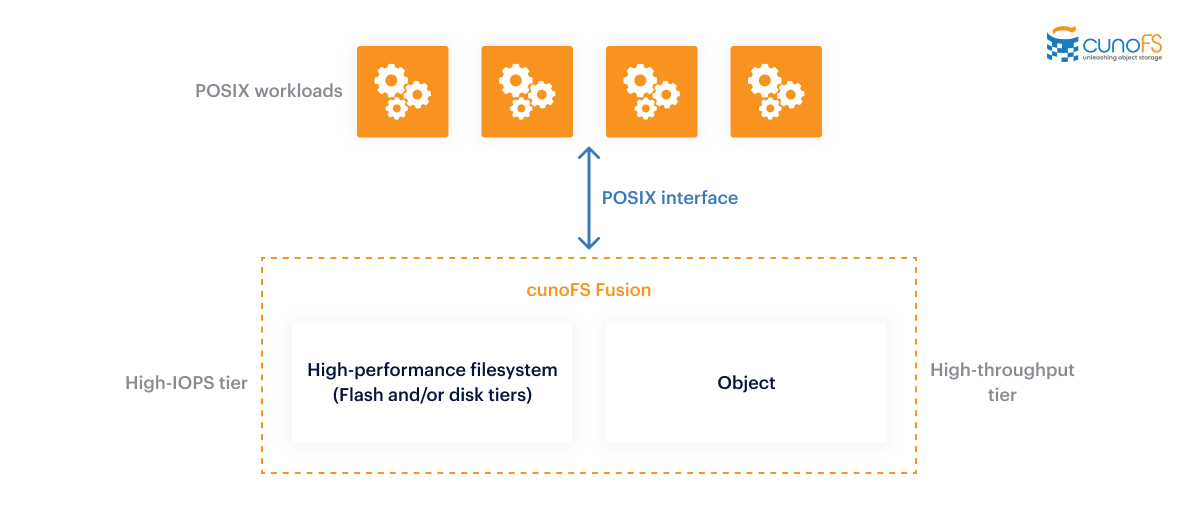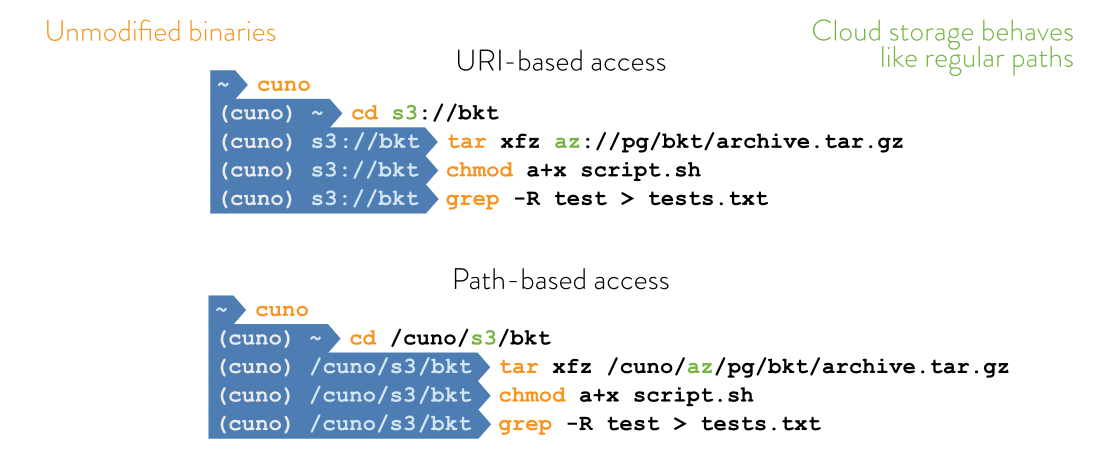How cunoFS solves your object storage problems
Technology in Detail


cunoFS is a high-throughput, POSIX-compatible filesystem for object storage. Files and directories on object storage accessed via cunoFS behave the same as they do on a local disk.
cunoFS is compatible with cloud object stores such as AWS S3 and Azure Blob Storage, as well as on-premises object stores such as minIO, Dell ECS, and NetApp StorageGRID.
Table of Contents
cunoFS makes object storage as fast as a filesystem
| File storage | Object storage |
| Directory structure | Flat, no directory structure |
| Scalability is hard | Highly scalable |
| POSIX compatible: UID/GID, symlinks, hardlinks, ACL, … | Not POSIX compatible |
| Direct access through OS (syscalls) | REST API (HTTPS) inside application |
| Strong consistency guarantees | Varies but usually weaker consistency |
| Usually single site | Often geo-distributed |
| RAID, duplication, or other redundancy | Erasure coded (highly efficient) |
| Typically low(er) latency | Typically high(er) latency |
| Fast random-access write | Replace whole object at a time |
cunoFS does this without introducing bottlenecks or scrambling data
How existing approaches to POSIX compatibility for object storage fall short
Using object storage as a second-class storage tier limits performance and scalability
FUSE-based filesystems for object storage access create too much system overhead
SHIMs are unable to intercept raw syscalls, thus limiting compatibility
How cunoFS removes the limitations of existing solutions while staying compatible with legacy scripts, workflows, and apps
cunoFS FlexMount: a faster version of a FUSE mount
Performant POSIX metadata encoding
Predictive prefetching based on expected storage access patterns
As a result of running on the client node, and even intercepting the application that is being run, cunoFS has much deeper insight into application behavior than ordinary shared filesystems. This enables cunoFS to peek into an application and intelligently prefetch according to each application’s predicted usage. Object storage typically has higher latencies than ordinary filesystems, so high-quality predictions can be essential to delivering high performance.
cunoFS Fusion: a solution for the highest-performance use cases
cunoFS Fusion allows customers to pair an existing filesystem capable of high IOPS with the high throughput and low cost of object storage, with both treated as first-class storage tiers.
This approach combines the best of both worlds – enabling both big performance gains and significant cost savings. For example, some throughput-limited workloads like genomics or machine learning can see large performance gains from being moved to a first-class object storage tier. It can also be paired with a filesystem like AWS FSx Lustre or EFS to deliver higher combined performance and reduce costs for general workloads.
How cunoFS keeps you in control of your data and workflows
We don’t compress, scramble, or deduplicate data
cunoFS works with all of your existing apps, including your shell
The cuno command enables cunoFS Direct Interception mode to intercept the user’s preferred shell, whether that is bash, zsh, csh, or something else. Tab completion, preferences/configuration, and other actions are provided by the existing shell, so everything works the same way it does without cunoFS. Applications run the same as well: running a command like ls actually launches the unmodified ls binary installed on the system.
cunoFS works with software you’ve already written in C/C++, Java, Python, Go, Rust, or any other programming language
We support the OS of your choice
cunoFS works inside Docker, Kubernetes, and Singularity containers
- by mounting on the host and bind-mounting into the container
- by injecting the cunoFS library into an unmodified container (we provide a seamless way to do this)
- or by installing cunoFS inside the container.
cunoFS supports multi-node POSIX consistency and locking semantics
Have questions about cunoFS?
Book a demo to have any technical and commercial questions answered.


